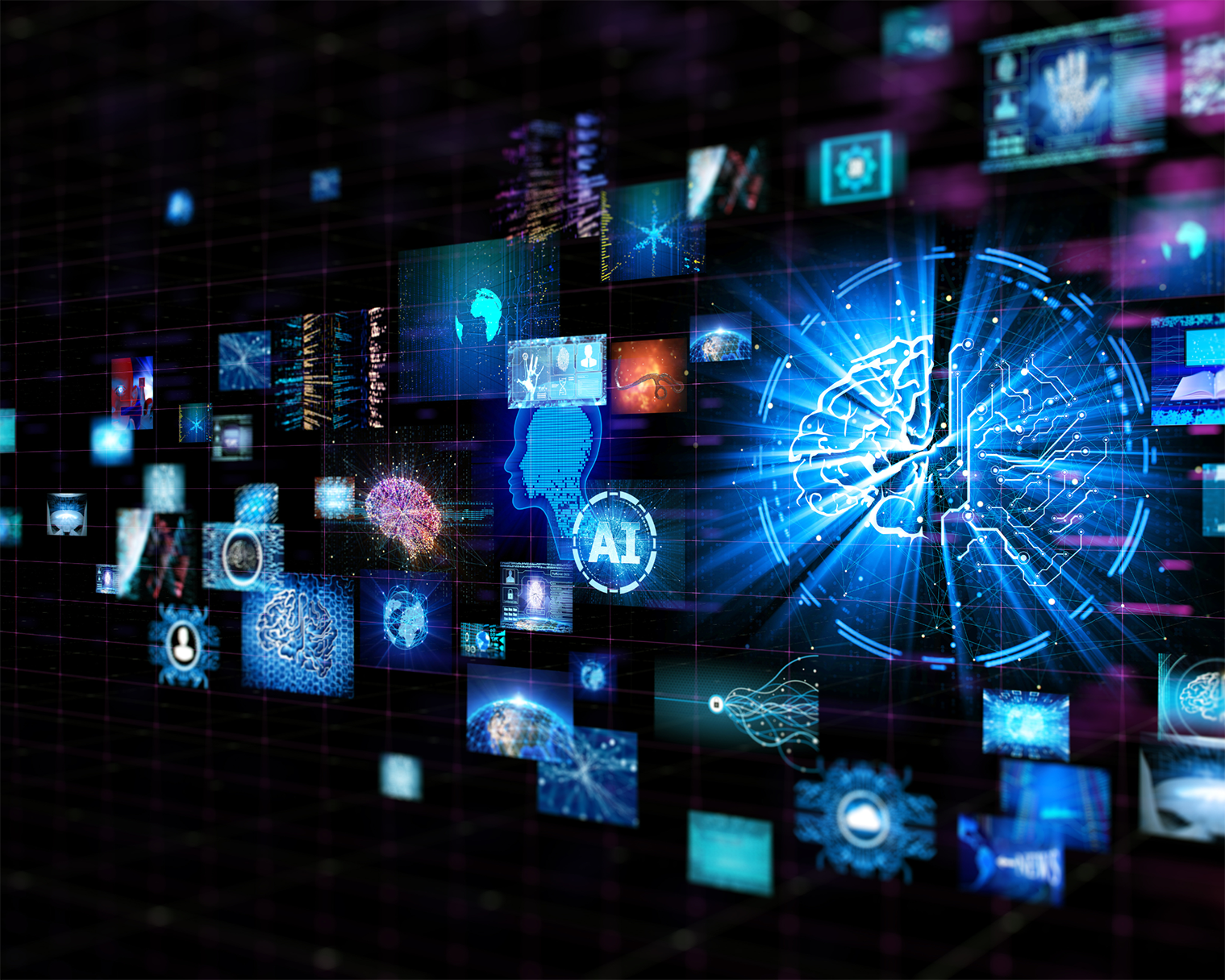Artificial Intelligence
Artificial Intelligence, or AI, may seem like a thing of the sci-fi realm. However, it is a form of technology that has been around for quite some time and has found its application in numerous fields. In medicine, its use has increased over the last few years. For example, AI stands behind chatbots, which help automate processes or even make predictions about users’ health. As someone types in their symptoms, the AI gathers information which is then used to create patterns. Similarly, there is AI that scours various online platforms and forums (such as Reddit) dedicated to healthcare in order to find patterns in frequently searched terms. If a particular word or phrase repeats more often than usual, the bot informs a human as a warning against a potential outbreak.
There are, of course, certain applications of AI in medicine that are designed specifically to make doctors’ lives easier. It can be used to better understand and more thoroughly analyse CT images. Microsoft has recently developed Project InnerEye, a machine learning-based technology that does just that – scans data acquired from hospital systems and images. It locates tumours on CT scans, thus cutting processing times and allowing for treatment planning to begin as soon as possible.
On the other hand, there is plenty that AI can offer to the consumer or patient, too. As mentioned, chatbots are being used to relay patient information to hospitals and professionals. But there are also tasks that it can perform on its own. There are certain healthcare applications whose purpose is to notify a patient when it is time to take their medication, suggest a check-up, or even alert them when their data gets concerning. This proves especially helpful to those with busy schedules or memory issues.
Telemedicine
You can probably assume that this practice has gone through a massive wave of popularisation in 2020, at the height of the pandemic. At that time, not only was it advised and mandated to stay at home, but it was a decision many chose to make of their own volition in order to help ‘flatten the curve.’ That is why many opted to contact their healthcare providers via telemedicine systems.
However, even though Covid has substantially decreased its grip on everyday life, self-isolation is still a reality for many people. For example, even despite the vaccine and preventive methods, immunocompromised people find it easier and safer to communicate with the world through their screens. The digitalisation of medical services also benefits those in rural areas who require long travel hours to reach a hospital or other institution. It should also be taken into consideration that some may not even be able to travel at all due to various reasons. Telemedicine ensures that these persons have access to proper medical care and counsel, regardless of their conditions.
Another issue telemedicine may have a hand in solving is the mental health crisis. Being able to speak remotely to specialists and therapists is the only option for some who either don’t have access to psychologists in their area or are prevented from physically attending appointments due to various reasons. Additionally, this method of accessing psychological care adds a layer of privacy for those who feel affected by the stigmatisation of mental illnesses.
Wearables and IoT
IoT, or The Internet of Things, includes all physical objects with sensors and software which connect to the Web. This is not as uncommon as it may sound since the majority of the population now owns a smartphone. Slightly less in numbers, but still popular, is the use of smartwatches. Accompanying all the amenities smart devices provide, they, too, have an application in healthcare.
In a hospital setting, wearables could also be ‘worn’ by inanimate objects. Simply sticking small sensors on equipment and other items can help staff keep track and easily take inventory of machinery and full-to-empty bed ratios. These sensors, equipped with the right software, could even detect issues with devices before humans. Predictive maintenance ensures that potential problems are fixed before they even get a chance to affect patients and the hospital’s functionality. They can be applied to X-ray machines, as well as MRI and CAT scanners.
If you own a smartwatch, odds are it is programmed to count the number of steps you take each day. But did you know that this is the least it can do for your well-being? With adequate programming, it can also measure and monitor heart rate, oxygen levels, blood volume & composition, and blood glucose levels. On top of all that, it could also potentially save a life. By granting it access to your family medical history and tracking your personal data as listed, it can compare the two sets of information and predict the onset of a chronic illness.
Cloud data storage
Storing your data on cloud software is not something completely new. However, its application in the healthcare industry is. Giving your cloud of choice access to medical records and information has many benefits, such as accessibility and increased processing speeds. Electronic health records, or EHRs, exist to make sure that doctors can easily view all data regarding a patient and that patients can skip tedious paperwork that usually awaits them on admittance.
This also means that your doctor can access your record from anywhere. For example, if a person requires multiple hospital visits, tests, and analyses, they will probably, all be performed by different staff members. But storing all the results on a cloud will ensure that it can all be reached by your doctor without the hassle of sending and searching for printed results. They can also be notified when an update has been made to a record, allowing them to track treatment dynamics from the comfort of their computers or other smart devices.
In cases where a second opinion is necessary or when a specific case begs the attention of specialists, data can be shared via the cloud. Doctors can grant access to records with the patient’s informed consent and get the advice and expertise required for them to be able to provide their clients with the best possible care and attention. This again cuts down waiting periods significantly and gives patients a head start in terms of receiving the proper treatment.
Extended reality
Extended reality is a term that includes virtual reality (VR), augmented reality (AR), and mixed reality (MR). Despite its appeal and popularity in the entertainment industry, XR has found its usage in many other branches. For example, it has applications in engineering, architecture, and medicine.
In cases of accidents or any other misfortunes that require first responders on the scene, AR glasses could prove crucial. If they are able to stream their line of vision, in this case – patients and their wounds, they can get immediate instructions from specialists. They could receive guidance that would potentially save lives. The patient can then be transported with less risk of the situation worsening, which is especially important in times when the site of the accident is far from the nearest hospital and timing is of great importance.
Furthermore, XR can be applied to mental healthcare as well. Using VR glasses and headphones to simulate certain situations and surroundings while a professional is present is a safe way to help patients cope and face their problems. This type of VR therapy would benefit those who suffer from PTSD, phobias, social anxiety, etc. Surely it would be more practical for someone with, say, a fear of heights to stand in a comfortable therapist’s office while only virtually facing their phobia than to actually be taken to a tall building, potentially sending them into a state of panic and worsening their condition.
VR glasses also have a use in training. For example, medical students can use them to simulate surgeries and get better practice. A study found that students who participated in VR training were able to perform medical procedures 20% faster and 38% more steps correctly than a group that received only traditional training. The element of realism in this type of exercise increases not only speed and precision but also the students’ resilience to stress and pressure.
Conclusion
The world is undoubtedly changing at an unprecedented pace. New technological advances are cropping up at every corner, and industry leaders are putting them to good use as soon as they can. The healthcare industry is no exception – especially following the pandemic.
The trends and transformations in digital healthcare quality we discussed in this article revolutionised the way we approach healthcare and have made it substantially more accessible. They incentivised the population to participate in their own well-being and take control and responsibility for themselves. By doing so, we can make the healthcare provider’s job easier so they provide us with better care and help.
Want to learn more? If you want to learn more about how Valcon can help your organisation create cutting-edge solutions, please email [email protected] and we’ll be in touch right away.













